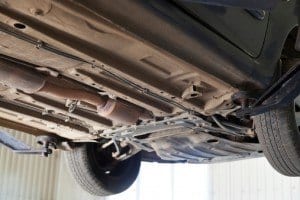 When talking about car alignment, there are two different kinds that can be done. You can have a front-end alignment or a four-wheel alignment. So what is the difference between the two, and how can you tell when you need a four-wheel alignment rather than a front-end?
When talking about car alignment, there are two different kinds that can be done. You can have a front-end alignment or a four-wheel alignment. So what is the difference between the two, and how can you tell when you need a four-wheel alignment rather than a front-end?
The term “alignment” means that the angles of your car’s wheels are adjusted to be in line with the manufacturer’s recommendations. Front-end alignments used to be more common and involve the alignment of only the front two wheels. Many older cars did not include the manufacturer’s recommendations for rear suspension, so front-end alignments were the norm.
Front-end alignment is less labor intensive and costs less than a four-wheel alignment. Four-wheel alignment involve aligning all four wheels. A four-wheel alignment is beneficial for all vehicles, but is most important for rear-wheel drive vehicles or for cars that have independent rear suspensions. Four-wheel alignment is becoming more common, as most car manufacturers include settings for the rear suspension, even on front wheel drive vehicles.
Here are a couple of questions to ask yourself when it comes to deciding which kind of alignment you need:
- Does my car have independent front and rear suspension? If the answer is yes, you need a four-wheel alignment.
- Is my car a front-wheel drive or a rear-wheel drive? If it’s a rear-wheel drive, then yes, you need the four-wheel alignment. Same answer if it’s a front-wheel drive with independent suspension.
At Kevin’s Car Repair LLC, we care about your safety. If your car is pulling to one side or has uneven tire wear, bring it in to us and we can check your alignment. It’s also a good idea to have an alignment done after replacing tires, doing suspension work or hitting a large bump (like a pothole or curb). We can help you get your car’s settings restored and get you smoothly on your way.



